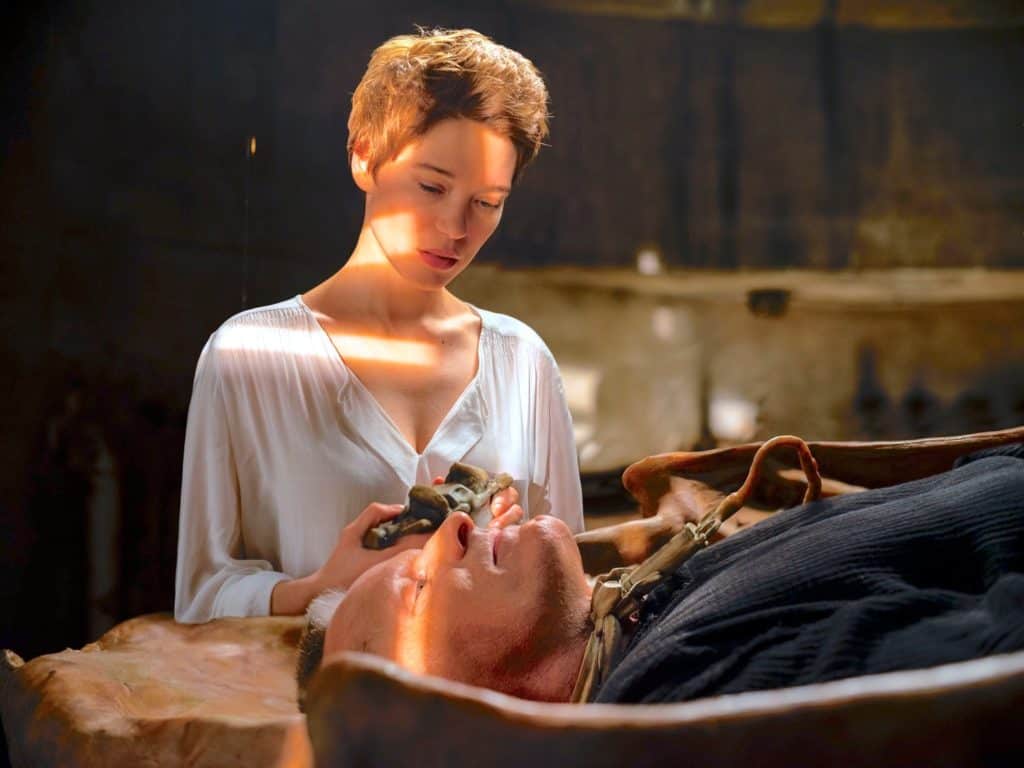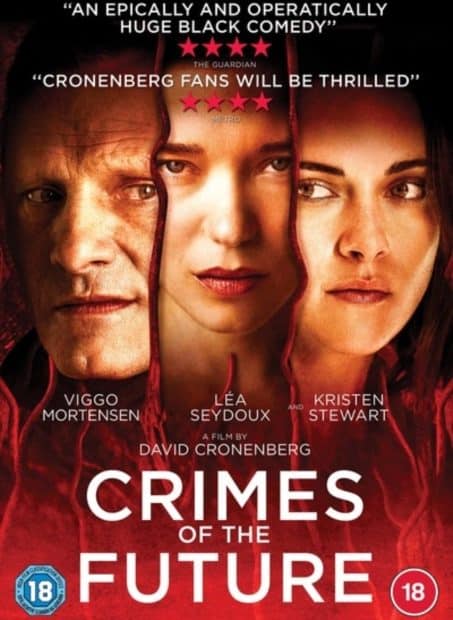Crimes of the Future was the name of a short David Cronenberg made in 1970. The inspiration for the title came from Henning Carlsen’s classic film Hunger (Sult 1966). In that film, the leading character, played by Swedish actor Per Oscarsson, portrays a failed poet. At one time during the film, he’s on a bridge, and he’s scribbling something in a notepad that he carries with him, and you have a close-up of it, and it says “crimes of the future”. Cronenberg was struck by that title and felt he wanted to read that poem. Later he thought that he wanted to see a film with that title, and that’s how the low-budget film came into being.
In the late nineties, Cronenberg wrote a script for a feature with the same name, which was never made for various reasons. Recently, Hungarian producer Robert Lantos called the director and asked if he was interested in making the film now. Cronenberg was initially reluctant since he felt it was outdated, but Lantos persuaded him that it was more relevant than ever. The story is about humans adapting to a synthetic environment with new transformations and mutations, and other complications.
Celebrity performance artist Saul Tenser (Viggo Mortensen) and his partner, Caprice (Léa Seydoux), publicly showcase the metamorphosis of his organs and his scarred body in avant-garde performances. Timlin (Kristen Stewart, an investigator from the National Organ Registry, obsessively tracks their movements, which is when a mysterious group is revealed.

This is Cronenberg’s first film since 2014, when Maps to the Stars was released. There has been a lot of buzz surrounding the film, and the expectations were palpable when the film opened in Cannes on Monday evening. Even though the director is working with cinematographer Douglas Koch for the first time, Cronenberg’s style is already evident in the credit sequence reminiscent of the one in eXistenZ (1999). The similarities between the films don’t end there, which is not altogether surprising since they were conceived during the same era. In interviews, the director promised walkouts during the first ten minutes. I am not sure if that happened, but it’s easy to understand which scene he refers to.
Crimes of the Future – A Map to the Scars
I won’t go into detail about the story and its development, but it’s safe to say that it fits very well in the director’s body of work. Thematically, obviously with the theme of body horror, but also in the splendid visuals created by the cinematographer and Cronenberg’s long-time partner in crime, Carol Spier. Together, they create an organic, tangible world that feels refreshing after watching several lacklustre films earlier during the festival. It is easily one of the most sumptuous-looking works of the festival, and even more so in the competition.
There is also an expansion of previous themes, especially from the aforementioned eXistenZ.1eXistenZ was produced by Robert Lantos, as well. If that is an obvious reference, I was also struck by the similarities to György Palfi’s Taxidermia (2006), where the body plays a pivotal part. In Palfi’s triptych, the third part, in particular, is quite close to Crimes of the Future. I have no idea whether Cronenberg saw that film (maybe it was introduced to him by the Hungarian producer), but there are clear similarities.
Crimes of the Future is Cronenberg’s most coherent film in a long time, and I can’t wait to see it again in the future. This is the Cronenberg that you should stick to, and not the one stuck in the Infinity Pool.
